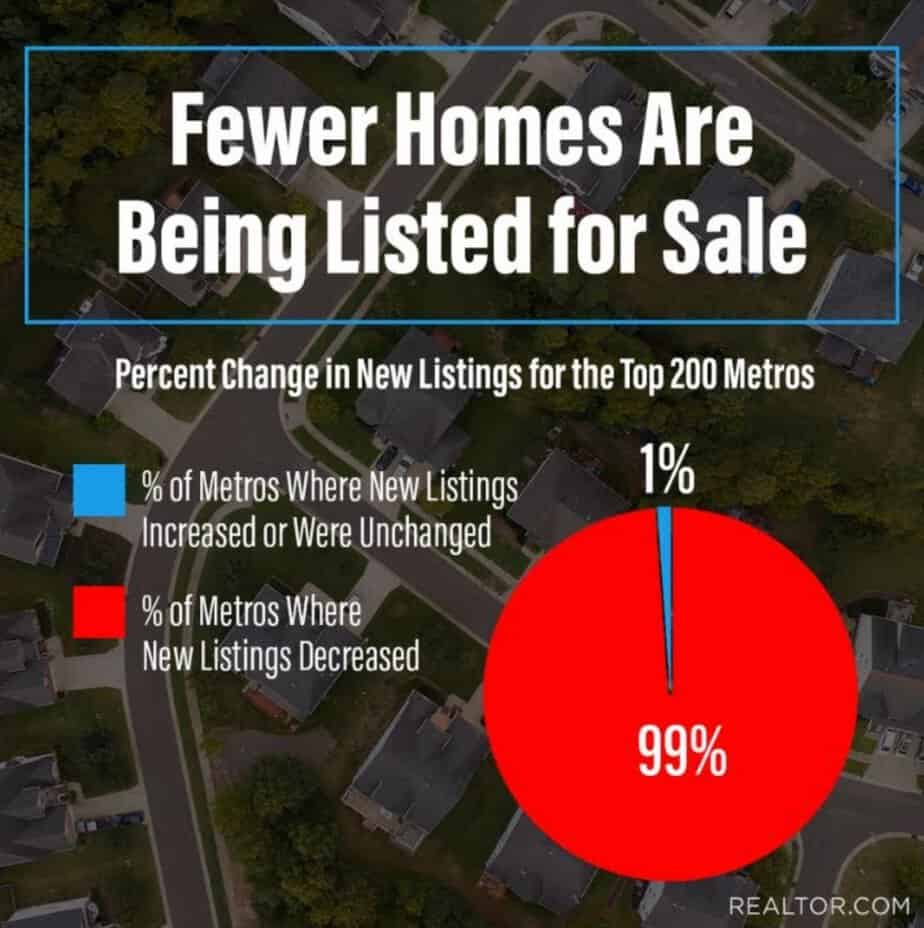Where are all the houses?
The Mid-Atlantic region has witnessed steady population growth recently due to a variety of factors, including job opportunities, higher education institutions and a diverse cultural environment. This influx of people has resulted in increased demand for housing. Urbanization has also played a crucial role as people move into cities, urban and suburban areas for employment and amenities, which further exacerbates the housing demand. This steady increase in population has created massive amounts of pressure on home affordability and just having enough good, affordable housing for everyone moving here.
What about new builds?
One of the major reasons for the low housing inventory is the limited availability of land for new housing developments. Urban and suburban areas in the Mid-Atlantic region have reached a point where available land for new housing development projects is hard to find and oftentimes too expensive. The scarcity of land and high prices severely hampers new construction projects, contributing to the housing shortage.
Regulatory challenges and zoning laws have also played an important role in deterring the development of new housing. Stringent regulations and zoning laws constrain potential developers, making it difficult to obtain the necessary permits and approvals for new construction. The Bureaucracy slows down housing development, often to a standstill, ultimately limiting the supply of homes.
Other Factors
The ever increasing costs of construction materials and labor have had a huge impact on the Mid-Atlantic region’s housing inventory. The escalating costs of building materials, such as lumber, steel and concrete, to name just a few, has raised the overall cost of construction projects, making it financially burdensome for developers to begin new housing construction projects. This has obviously played a huge role in slowing down the pace of new residential construction.
The lack of skilled labor in the construction industry has been a significant issue in the creation of new housing units. Skilled workers, such as carpenters, electricians and plumbers are in very high demand and in short supply. The limited workforce delays projects, slowing down the growth of housing inventory. These blue collar jobs, despite having the potential of being excellent careers, have long been looked down upon and not incentivized enough to get kids interested in them. This shortage of skilled workers continues to grow.
The factors above really highlight the fact that the new construction of housing developments in the Mid-Atlantic has slowed down dramatically. This slowdown means less new homes for people to buy, putting more and more pressure on the turnover of the current inventory. However, current economic factors, including interest rates and market conditions, play a crucial role in housing inventory levels. In times of economic uncertainty, which we are obviously in the middle of currently, many potential sellers are holding off listing their properties, with the anticipation of better rates and market conditions in the future. The reluctance to sell, which we are seeing a lot of right now, has led to a dramatic decrease in the available housing inventory. Why would a seller give up their historically low rate, even with the promise of selling at an extremely high price, to buy a new house at inflated prices with rates more than double what they had? Many don’t, hence the problem.
A Look Ahead
The residential housing inventory shortage in the Mid-Atlantic region in 2023 can be attributed to a very complex interplay of factors, including population growth, limited land availability, regulatory challenges, high construction costs, skilled labor shortages and a variety of current
economic factors. Addressing these issues requires a multifaceted approach involving policy changes, increased investment in construction and massive collaborative efforts among all the stakeholders in order to ensure a sustainable and adequate housing supply for the growing population, well into the future. These factors seem to have created the “perfect storm,” for both buyers and sellers of residential real estate in the region. Buyers are faced with less houses to choose from, at higher prices along with higher interest rates making what they can afford drastically lower. On the other side of things, sellers don’t want to give up their excellent interest rate, no matter the amount they’ll make when they sell, again, contributing to higher prices and low inventory levels. Something has to change or prices will continue to skyrocket, allowing less and less people to fulfill the American Dream of homeownership, while continuing to see the available inventory levels continue to dwindle.
While things may seem dire now, the real estate market is cyclical and we will eventually come out on the other side and see a more balanced market of buyers and sellers. Wanna keep up to date on the market and all things real estate related? Follow us on our social media channels, @MrListerRealty.

